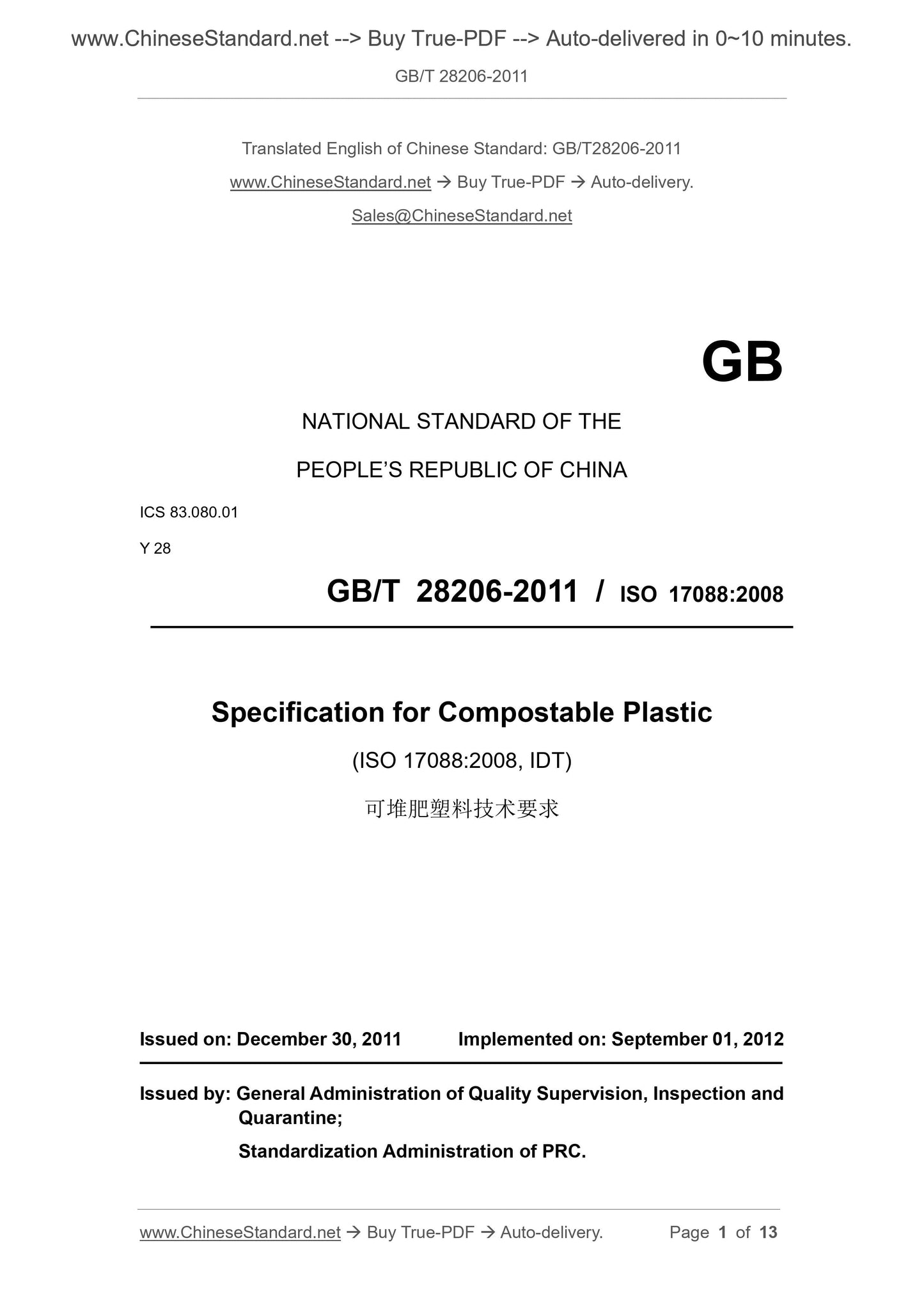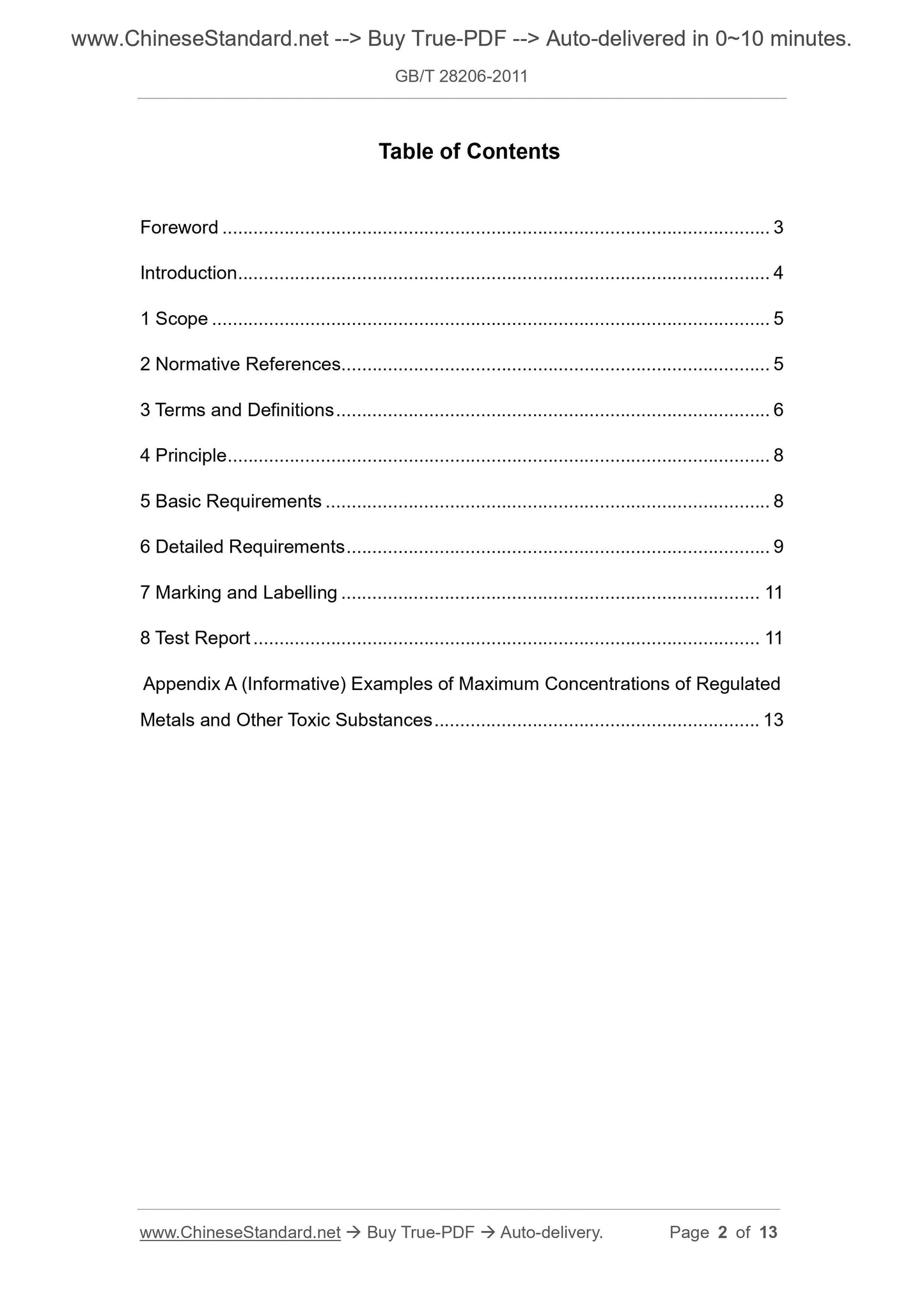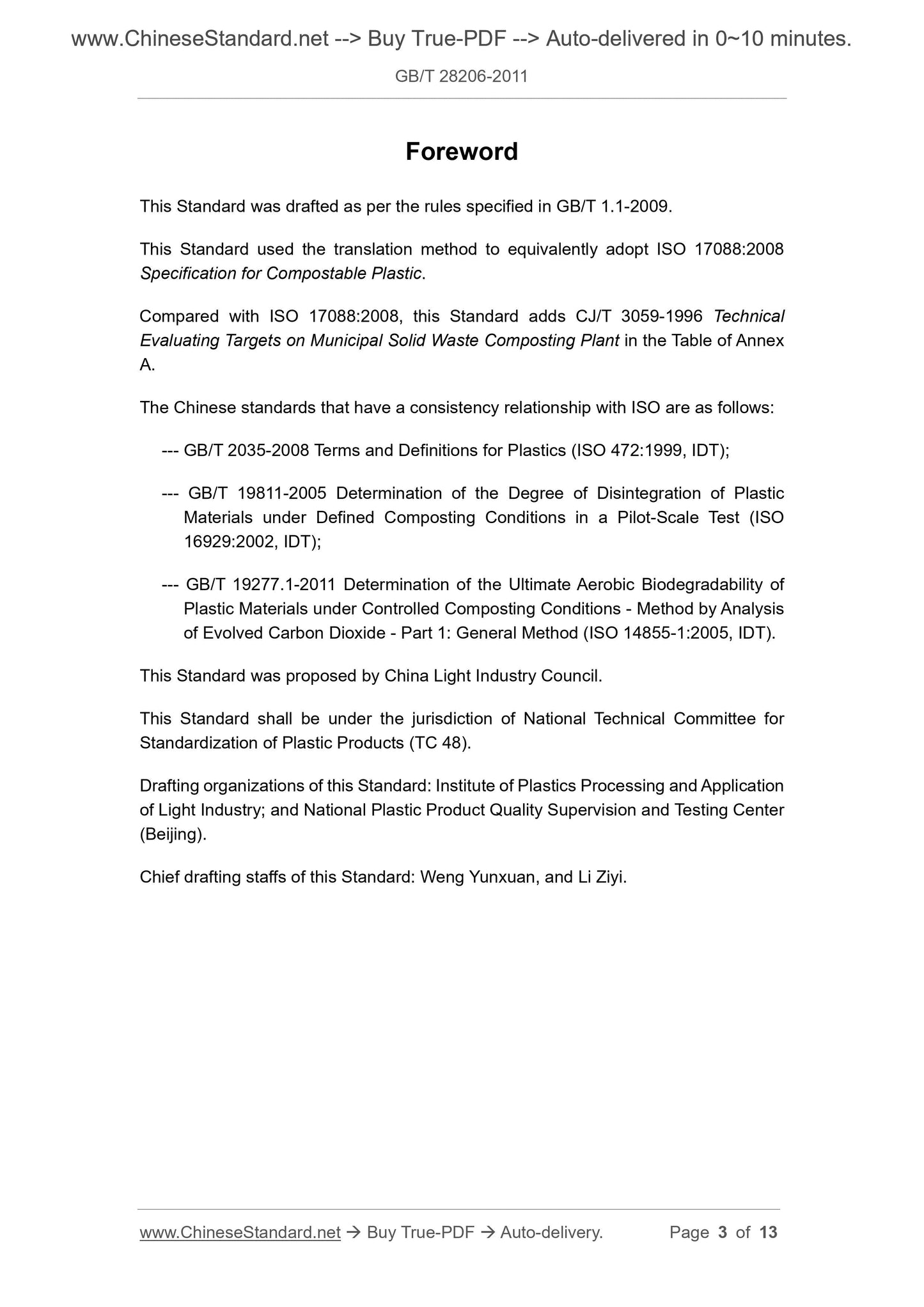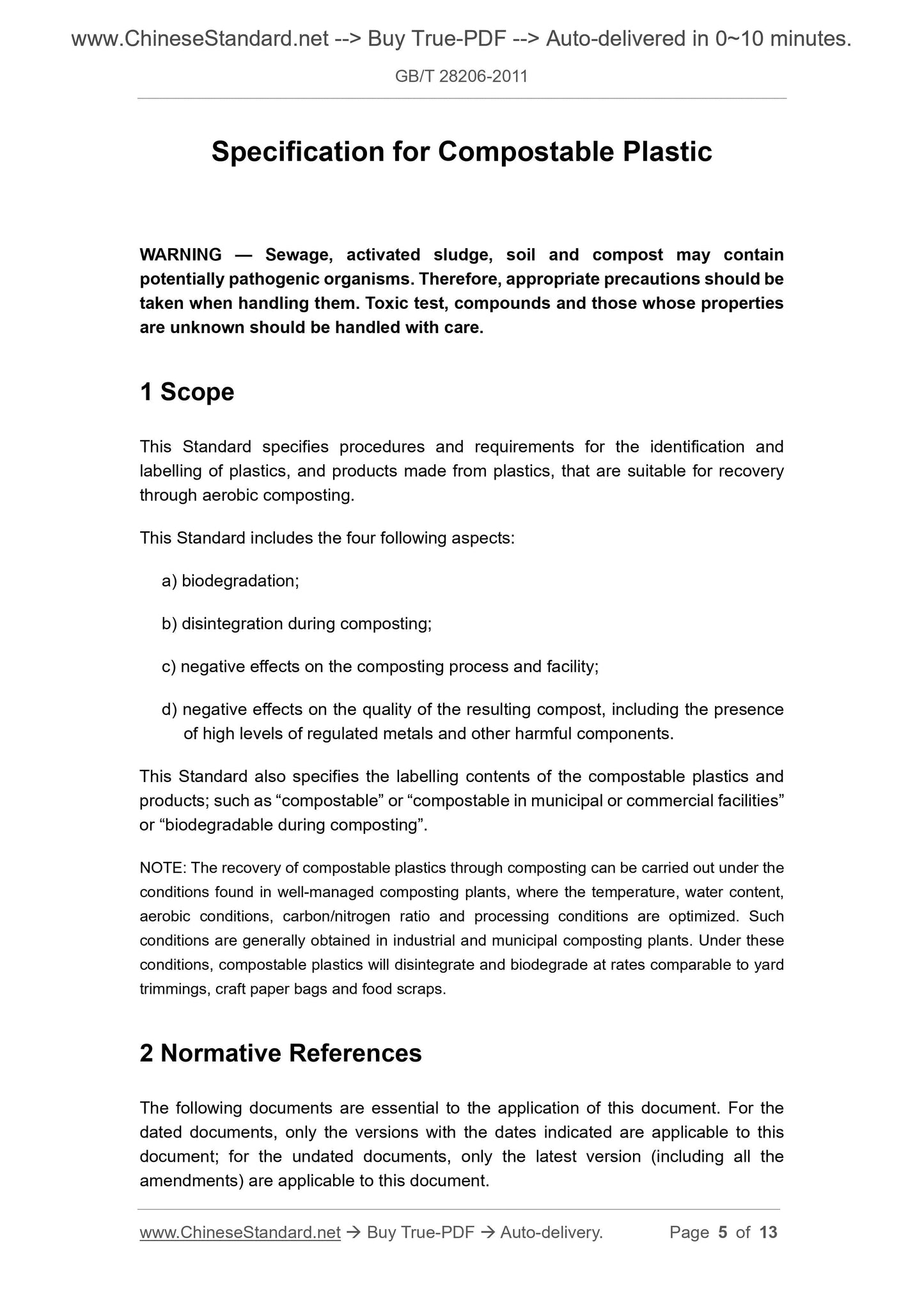1
/
of
4
www.ChineseStandard.us -- Field Test Asia Pte. Ltd.
GB/T 28206-2011 English PDF (GB/T28206-2011)
GB/T 28206-2011 English PDF (GB/T28206-2011)
Regular price
$150.00
Regular price
Sale price
$150.00
Unit price
/
per
Shipping calculated at checkout.
Couldn't load pickup availability
GB/T 28206-2011: Specification for compostable plastic
Delivery: 9 seconds. Download (and Email) true-PDF + Invoice.Get Quotation: Click GB/T 28206-2011 (Self-service in 1-minute)
Newer / historical versions: GB/T 28206-2011
Preview True-PDF
Scope
This standard specifies procedures and requirements for the identification and identification of plastics and products with aerobic composting performance.The technical requirements of this standard include the following four aspects.
a) biodegradability;
b) disintegration performance;
c) negative impacts on composting processes and equipment;
d) The quality of the resulting compost, including the amount of controlled metals and other harmful components.
This standard also specifies the identification content of compostable plastics and products, such as “compostable” or “compostable in municipal or commercial facilities” or “heap”
Biodegradable in the process of fertilizer."
Note. Composting of compostable plastics should be carried out in well-run composting facilities, requiring suitable temperature, water content, aerobic conditions, carbon/nitrogen ratio
And processing methods, etc. Commercial and municipal composting equipment can usually meet these conditions. Under these conditions, compostable plastics will disintegrate and biological
Decomposition, the decomposition rate is equivalent to garden waste, kraft paper bags and food debris.
Basic Data
| Standard ID | GB/T 28206-2011 (GB/T28206-2011) |
| Description (Translated English) | Specification for compostable plastic |
| Sector / Industry | National Standard (Recommended) |
| Classification of Chinese Standard | Y28 |
| Classification of International Standard | 83.080.01 |
| Word Count Estimation | 11,182 |
| Date of Issue | 2011-12-30 |
| Date of Implementation | 2012-09-01 |
| Quoted Standard | GB/T 2035-2008; GB/T 19277.1-2011; GB/T 19811-2005; ISO 14855-2; ISO 20200; EN 13432; ASTM D5338; ASTM D6400-2004; OECD 208 |
| Adopted Standard | ISO 17088-2008, IDT |
| Regulation (derived from) | National Standard Approval Announcement 2011 No.23 |
| Issuing agency(ies) | General Administration of Quality Supervision, Inspection and Quarantine of the People's Republic of China, Standardization Administration of the People's Republic of China |
| Summary | This standard specifies the identification and labeling of plastics and performance products with aerobic composting procedures and requirements. The technical requirements of this standard contains the following four aspects: a) biological decomposition performance, b) disintegration performance, c) negative impact on the composting process and equipment, d) the quality of the resulting compost, including controlled metal content and other harmful ingredients. This standard also specifies the identity and content of compostable plastic products, such as "compostable" or "at the municipal or commercial composting facility" or "biodegradable composting process. " |
Share







